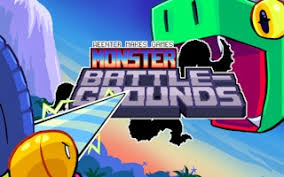Understanding Vertex Games: Exploring Their Concepts, Applications, and Challenges
Content:
Vertex games are a fascinating area of study in game theory, combining strategic decisionmaking with graph theory. These games involve players making moves at vertices (nodes) of a graph, where the structure of the graph influences the players strategies and outcomes. But what exactly are vertex games, and how do they differ from other types of games? Lets explore some key questions and delve into their applications.
What Are Vertex Games?
A vertex game is a mathematical model where players choose actions at vertices of a graph, and the payoffs depend on the interactions between these vertices. Unlike traditional games played on a grid or continuous space, vertex games leverage the combinatorial nature of graphs, making them suitable for scenarios involving networked systems, resource allocation, and strategic interactions.
Possible Questions About Vertex Games
1. How do the properties of the graph affect the games outcome?
2. What strategies are commonly used in vertex games?
3. How do vertex games relate to other fields, such as economics or computer science?
4. What are the realworld applications of vertex games?
Exploring the Graphs Influence
The structure of the graph is central to vertex games. For example, in a game where players control vertices to maximize their payoffs, the connectivity of the graph (i.e., how vertices are connected) can significantly alter the optimal strategy. A dense graph might favor cooperative play, while a sparse graph could encourage competitive strategies. Understanding these dynamics is crucial for designing effective algorithms and policies.
Strategies in Vertex Games

Players in vertex games often employ various strategies, such as greedy algorithms, which select the most beneficial vertex at each step, or backtracking methods, which consider longterm consequences. Additionally, concepts like Nash equilibrium and subgame perfect equilibrium are adapted to the graphs structure to dict stable outcomes.
Connections to Other Fields
Vertex games have applications across disciplines:
ns or communication networks.
Computer Science: They are used in network security, where players might control vertices to vent attacks.
Social Sciences: They help analyze conflict resolution in social networks.
RealWorld Applications
One notable application is in telecommunications, where vertex games optimize the placement of routers or base stations. By modeling the network as a graph, companies can efficiently allocate resources to maximize coverage or minimize costs. Another example is in urban planning, where vertex games help design public transportation systems by balancing demand and infrastructure.
Sharing Insights
l locations and customer flow. This approach not only maximizes profits but also considers competitive ssures.
Challenges and Future Directions
Despite their utility, vertex games face challenges, such as scalability in large graphs and the computational complexity of finding optimal strategies. Researchers are actively exploring heuristics and machine learning techniques to address these issues, paving the way for more sophisticated applications.
In conclusion, vertex games offer a powerful framework for analyzing strategic interactions in networks. By understanding their mechanics and applications, we can develop better solutions for realworld problems, from optimizing resource allocation to enhancing network security.
This article provides a comhensive overview of vertex games, addressing fundamental questions while highlighting their relevance and potential. Whether youre a student, researcher, or practitioner, the insights here can help you apciate the elegance and utility of vertex games.

